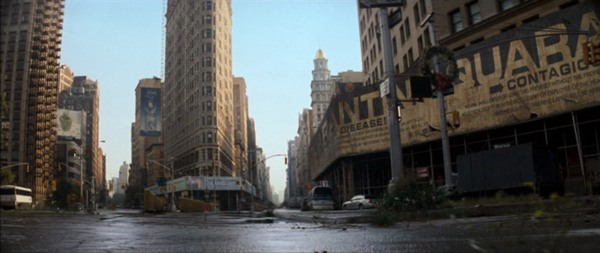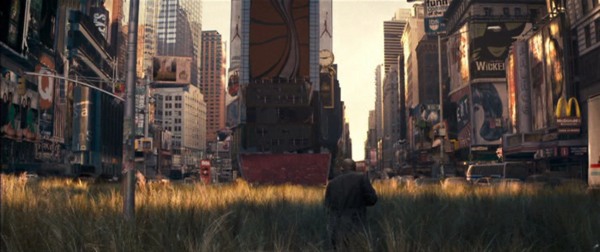My title is a lift from Alan N. Shapiro’s interesting and frustrating book on Star Trek as hyperreality, but what motivates me to write today are three items bobbing around in the news: two from the world of global image culture, the other from the world of science and technology.
Like Dan North, who blogs smartly on special effects and other cool things at Spectacular Attractions, I’m not deeply into the Olympics (either as spectator or commentator), but my attention was caught by news of what took place at last week’s opening ceremonies in Beijing. In the first case, Lin Miaoke, a little girl who sang the revolutionary hymn “Ode to the Motherland,” was, in turns out, lip-synching to the voice of another child, Yang Peiyi, who was found by the Communist Party politburo to be insufficiently attractive for broadcast. And in the second case, a digitally-assisted shot of fireworks exploding in the nighttime sky was used in place of the evidently less-impressive real thing.
To expound on the Baudrilliardian intricacies at play here hardly seems necessary: the two incidents were tied together instantly by the world press and packaged in headlines like “Fakery at the Olympics.” As often happens, the Mass Media Mind — churning blindly away like something from John Searles’s Chinese room thought experiment — has stumbled upon a rhetorical algorithm that tidily condenses several discourses: our simultaneous awe and dread of the powers of technological simulation; the sense that the Olympics embodies an omnivorous spectacularity threatening to consume and amplify beyond recognition all that is homely and human in scale; and good ol’ fashioned Orientalism, here resurrected as suspicion of the Chinese government’s tendency toward manipulation and disguise. (Another “happy” metaphorical alignment: the visibility-cloaking smog over Beijing, so ironically photogenic as a contrast to the crisp and colorful mass ornament of the crowded, beflagged arenas.)
If anything, this image-bite of twinned acts of deception functions, itself, as another and trickier device of substitution. Judging the chicanery, we move within what Adorno called the closed circle of ideology, smugly wielding criticism while failing to escape the orbit of readymade meanings to question more fundamental issues at stake. We enjoy, that is, our own sense of scandal, thinking it premised on a sure grasp of what is true and indexical — the real singer, the unaltered skies — and thus reinscribe a belief that the world can be easily sorted into what is real and what is fake.
Of course it’s all mediated, fake and real at the same time, calibrated as cunningly as the Olympics themselves. Real bodies on bright display in extremes of exertion unimaginable by this couch potato: the images on my high-def screen have rarely been so viscerally indexical in import, every grimace and bead of sweat a profane counterpoint to sacred ballistics of muscled motion. But I fool myself if I believe that the reality of the event is being delivered to me whole. Catching glimpses of the ongoing games as I shuffle through surrounding channels of televisual flow is like seeing a city in flickers from a speeding train: the experience julienned by commercials and camera cuts, embroidered by thickets of helpful HUD graphics and advertisers’ eager logos. Submerged along another axis entirely is the vanished reality of the athletes’ training: eternities of drilling and repetition, an endless dull disciplining at profound odds with the compacted, adrenalized, all-or-nothing showstoppers of physical prowess.
Maybe the collective fascination of the lip-synching stems from our uncomfortable awareness that we’re engaged in a vicarious kind of performance theft, sitting back and dining on the visual feast of borrowed bodily labor. And maybe the sick appeal of the CG fireworks is our guilty knowledge that human beings are functioning as special effects themselves, there to evince oohs and ahs. All I know is that the defense offered up by the guy I heard on BBC World News this morning seems to radically miss the point. Madonna and Britney lip-synch, he said: why is this any different? As for the digital fireworks, did we really expect helicopters to fly close to the airborne pyrotechnics? The cynicism of the first position, that talent is always a manufactured artifact, is matched by the blase assumption of the second, permuting what we might call the logic of the stuntman: if an exploit is too dangerous for a lead actor to perform, sub in a body worth a little less. In the old days, filmmakers did it with people whose names appeared only in the end credits (and then not among the cast). Nowadays, filmmakers hand the risk over to technological standins. In either case, visualization has trumped representation, the map preceding the territory.
But I see I’ve fallen into the trap I outlined earlier, dressing up in windy simulationist rhetoric a more basic dismay. Simply put, I’m sad to think of Yang Peiyi’s rejection as unready for global prime time, based on a chubby face and some crooked teeth (features, let me add, now unspooling freely across the world’s screens — anyone else wondering how she’ll feel at age twenty about having been enshrined as the Ugly Ducking?). Prepping my Intro to Film course for the fall, I thought about showing Singin’ in the Rain — beneath its happy musical face a parable of insult in which pretty but untalented people highjack the vocal performances of skilled but unglamorous backstage workers. Hey, I was kind of a chubby-faced, snaggle-toothed kid too, but at least I got to sing my own part (Frank Butler) in Annie Get Your Gun.
In other disappearance news: scientists are on their way to developing invisibility. Of this I have little to say, except that I’m relieved the news is getting covered at all. There’s more than one kind of disappearance, and if attention to events at Berkeley and Beijing is reassuring in any measure, it’s in the “making visible” of cosmetic technologies that, in their amnesiac emissions and omissions, would otherwise sand off the rough, unpretty edges of the world.





